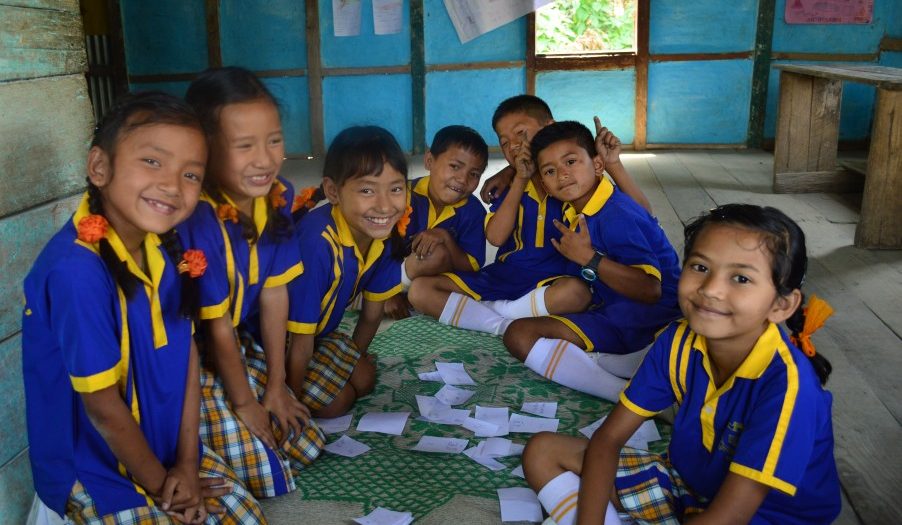Jayanti, who recently volunteered at Lovebuds School near Kalimpong, talks about her contributions to the school. If you’ve missed it, catch up on Part 1 and Part 2 of her story.
One of my aims was to see if I could help them improve their writing skills and so I set up a class where they produced essays on an outing to the Science Park. This introduced them to the idea of structuring their stories with a “beginning, middle and end” and also to writing in paragraphs. They produced some lovely illustrated work on dinosaurs: posters were produced and put up on their classroom walls (this was achieved after a major hunt for drawing pins and glue!) We also had great fun reading out and pronouncing the multisyllabic and odd-sounding dinosaur names.
I feel that it is important to remember that children in many countries across the globe attend schools which are similarly under-resourced in terms of sophisticated learning and teaching materials. At Lovebuds all the basics exist: now a new and proper school building (thanks to Mondo), with pupils’ toilets and classrooms equipped with blackboards and a committed teaching staff. Combine this with a high level of motivation and industrious application from the pupils and we have many positives.
It is important to be realistic about how the school is equipped. It is the permanent staff who are ultimately responsible for achieving curriculum objectives, preparing students for exams and entry to secondary schools and they need the building up of affordable and practical resources for them to reach these aims. These are built around textbooks which are the most accessible resource here. Adequate stationery, maps, atlases, reference books and also teachers’ guides and manuals and more teacher training are recognised by a Unesco study as cost-effective and accessible aids. It is therefore quite important for volunteers to manage their expectations and be aware of the learning and teaching culture of the local education system. Perhaps volunteers could include some time with teachers as well as the children, particularly those with no formal qualifications, to discuss and contribute ideas towards their lessons.
What I felt was really important in this school was that the children with all their potential have the opportunity to continue their education and most parents in this village prefer to send their children to schools in Kalimpong which they believe are better than in the village even with all the constraints that come with sending their children away. School fees are an issue and traditional ways and expectations for the children especially for the girls could also be a drawback. It is easy to think that girls might end up getting married and settling down without continuing their education simply because it is easier, but I hope not!
I wish the children all the best for the future and remain grateful to them, my host family and Mondo  for a truly wonderful experience.




Comments are closed.